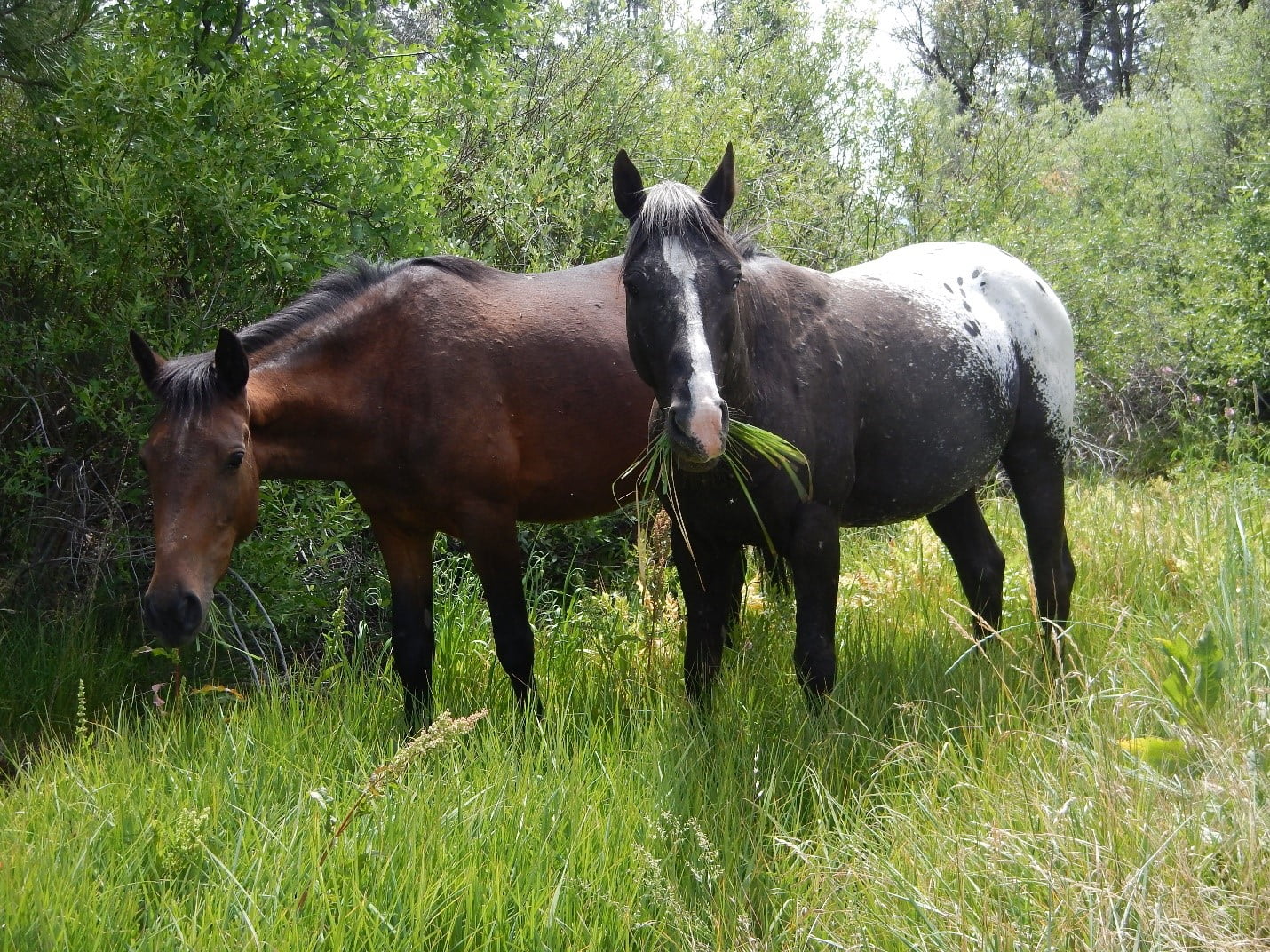The issue of annual disaster caused by catastrophic wildfire, which remains as one of America’s most costly problems as of this writing, is not being properly addressed and will continue to devastate our communities and economies.
Q3 2020 hedge fund letters, conferences and more
Unfortunately, we don't hear grant-stream scientists, including environmentalist scientists and academics speaking about the fact that government agencies are removing and keeping native species American wild horses out of areas where they belong and where they have evolved to uniquely benefit wilderness ecosystems.
An important yet understated fact of biology is that; horses have just one stomach (monogastric digestors) and pass most of the plant seeds they eat intact and able to germinate onto the ground in their droppings.
Using Ruminants On Wilderness Landscapes For Fire Grazing
On the other hand, cattle and other ruminants have multi-chambered stomachs, which digest virtually all the seeds they consume. Thus, when using such ruminants on wilderness landscapes for fire grazing, ruminants prevent native flora from reseeding themselves by consuming and digesting their seeds. The result is that cattle, sheep and goats will over time strip untillable wilderness landscapes of its native flora. This is particularly problematic in wilderness areas containing threatened and endangered flora and related dependent fauna.
The current wildlife and land management paradigm (rounding up native species wild horses) used by the Bureau of Land Management (BLM) and United States Department of Agricultural (U.S. Forest Service; USFS) is damaging our wilderness landscapes, forests and watersheds. And adding to that, is the immediate and long-term damage that cattle, sheep and goats cause to the flora and related fauna as well as to soils and watersheds in wilderness areas [1].
The damage caused by mismanaged ruminants comes when they are allowed into the wrong places to graze, as is currently being done on public lands by the BLM and USFS, with plans to expand on that reckless land management (ruminant fire grazing on wilderness landscape) by the BLM and USFS.
The Problem For Native Flora And Fauna
The problem for native flora and dependent native fauna (including wild horses) is the for-profit corporate and government agenda; cattle and other livestock being grazed on public lands brings profits to those who exploit public lands.
Many scientists, including academics, who are always angling for grant money (their institutional value is partially determined by the amount of money they bring-in to their institutions and programs) are being very careful so as to not irritate any of the companies that are funding studies in agriculture, range management and forestry. It can be argued that many scientists and academics have lost their intellectual integrity and are now more loyal to money and ego than logic and science.
He who has the gold makes the rules…
As is often the case, studies that are carefully designed to support the short and long-term agendas, revenue goals and products are most likely to get funded.
Bought And Paid For Results
Companies in the agricultural industry like; Cargill, Monsanto, Dupont and Dow Chemical, among others, are very selective about which studies they will fund with grants. There is ample scientific evidence that the foregoing is the case [2].
The agri-production Industry then presents the so-called science, which can be argued as *'bought and paid for' results, to the public in support of their agendas and product roll-outs.
So-called science that predominantly serves a revenue-driven agenda should be suspect when it’s presented as fact; often such so-called science is arguably a derivative form of product or paradigm support.
All that said, herein below is an unbiased scientific study from Oregon State University that proves ruminants (cattle, sheep and goats) digest most of the seeds they consume, and will strip native flora from wilderness areas. The study also shows that wild horses are part of a naturally-evolved reseeding process on the North American continent.
Seed Digestion: Ruminants (cattle/sheep/goats) vs. Horses:
*Influence of ruminant digestive processes on germination of ingested seeds: https://ir.library.oregonstate.edu/concern/graduate_thesis_or_dissertations/v405sg230
And this cartoon with description:
*Ruminant Digestion: https://www.mun.ca/biology/scarr/Ruminant_Digestion.html
As can be read in the published article; Fire Grazing: Impact of Wild Horses vs. Livestock On Wildfire Regime [3], the foregoing seed digestion studies support the thesis behind the wilderness land management paradigm called 'Wild Horse Fire Brigade' (www.WHFB.us) and the logic as to why the use of herbivores must be done with great care and using facts, as opposed to management methods driven by greed, ego and politics.
[1] ‘Cattle Grazing Effects on Macroinvertebrates in an Oregon Mountain Stream’ Rangeland Ecology and Management 60(3), 293-303, (1 May 2007) James D. McIver and Michael L. McInnis; https://doi.org/10.2111/1551-5028(2007)60[293:CGEOMI]2.0.CO;2 [2] The Influence of Industry Sponsorship on the Research Agenda: A Scoping ReviewAlice Fabbri, MD, PhD, Alexandra Lai, BPharm, Quinn Grundy, RN, PhD, and Lisa Anne Bero, PhD: https://www.ncbi.nlm.nih.gov/pmc/articles/PMC6187765/
[3] Fire Grazing: Impact of Wild Horses vs. Livestock On Wildfire Regime:https://wildhorsesite.com/impact-wild-horses-vs-livestock-on-wildfires.html
#Wild Horses, #Wildfire, #Fire Grazing, #Livestock, #Cattle, #Land Management, #Public Lands





